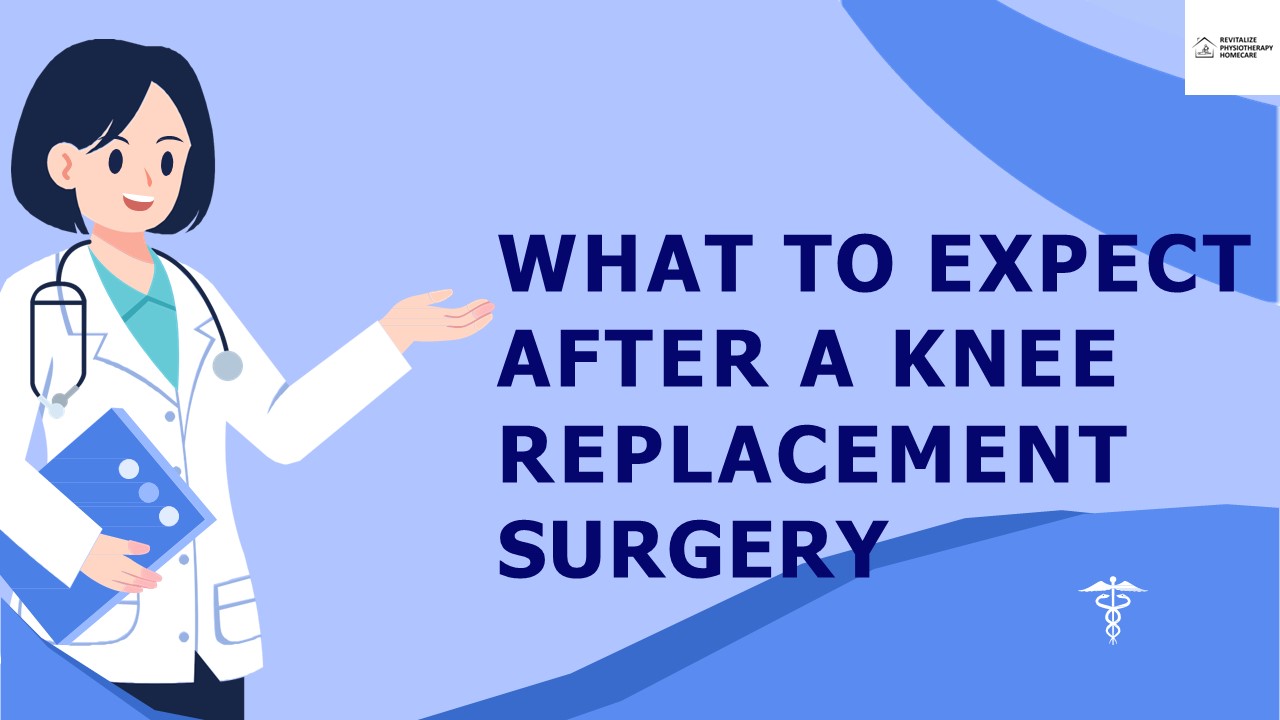What to Expect After a Knee Replacement Surgery - PowerPoint PPT Presentation
Title:
What to Expect After a Knee Replacement Surgery
Description:
Knee joints are one of the most affected joints which impacts nearly each growing old person's quality of life. Knee pain because of osteoarthritis is a very annoying concern that human beings undergo. Do consult Revitalize Physiotherapy and Homecare for Knee checkup, replacement or surgery. Book an appointment with us- | 905-452-0222 | revitalizephysio@gmail.com – PowerPoint PPT presentation
Number of Views:0
Title: What to Expect After a Knee Replacement Surgery
1
WHAT TO EXPECT AFTER A KNEE REPLACEMENT SURGERY
2
WHAT IS KNEE REPLACEMENT SURGERY?
- Knee replacement surgery is known as arthroplasty
of knee. It is a surgical procedure in which a
damaged or worn-out knee joint is replaced with
an artificial joint made of metal, plastic, or
ceramic materials. - The surgery is performed on patients with severe
knee pain and disability caused by conditions
such as osteoarthritis, rheumatoid arthritis, or
injury. During the surgery, the damaged or
diseased parts of the knee joint are removed,
and the artificial joint is implanted in their
place. After the surgery, patients typically
undergo a period of rehabilitation or Knee
Replacement Physiotherapy Brampton to regain
strength and mobility in their knee joint.
3
COMMON REASONS FOR KNEE REPLACEMENT SURGERY
INCLUDES
Other conditions
Rheumatoid arthritis
Trauma or injury
Osteoarthritis
4
TIMELINE OF GETTING BACK TO NORMAL AFTER KNEE
REPLACEMENT SURGERY
1 One Hour After Surgery
4
2 3 One Week After Surgery
One or Three
One Year
Months After After Surgery
Surgery
5
After one hour following knee replacement
surgery, the person will typically still be in
the recovery room or the post-anesthesia care
unit (PACU). The healthcare team will assess the
person's ability to move their toes and ankle,
as well as the sensation in their leg.
1 One Hour After Surgery
Overall, the first few hours after knee
replacement surgery are focused on monitoring
the person's vital signs, managing pain, and
starting rehabilitation exercises. The
healthcare team will closely monitor the
person's progress and adjust their physio plan
as needed to ensure a safe and successful
recovery.
6
You can avail of mobile physiotherapy service
and get a customized plan with specific
instructions on how to care for the incision and
when to change the dressing.
2
Inhome physiotherapy will be ongoing, with
exercises to improve range of motion, strength,
and mobility. A Brampton
One Week
Physiotherapist may also provide instructions on
how to use assistive devices, such as crutches
or a walker. The therapist will schedule
follow-up appointments to check progress. It is
important to follow the healthcare provider's
instructions to ensure a safe and successful
recovery.
After Surgery
7
After one month following knee replacement
surgery, the person will have made significant
progress in their recovery. Pain and swelling
should have decreased, and the person may be
able to stop taking pain medication.
3 One or Three Months After Surgery
The wound will heal and the healthcare provider
will likely remove any remaining sutures or
staples. Knee Replacement Physiotherapy will
still be ongoing, with exercises to further
improve range of motion, strength, and mobility
in the knee joint.
8
After three months following knee replacement
surgery, pain and swelling should be minimal.
Rehabilitation will still be ongoing. But the
frequency of appointments may decrease as the
person becomes more independent.
4
One Year
The person should continue to work on
improving range of motion, strength, and After
Surgery mobility of the knee joint. At this
point, the person will be able to perform most
activities of daily living without help. And may
be able to return to work or other normal
activities, depending on their job.
9
FINAL TAKEAWAYS
We hope this blog helps you understand more about
what to expect after you go through knee
replacement surgery. At Revitalize Physiotherapy
and Homecare, we are geared up to help you
recover from all your health concerns. For the
best Knee Pain Treatment Brampton, book an
appointment with us right away!
10
3 Dalecrest Road, Brampton, ON, L6X 5N3
905-452-0222 revitalizephysio_at_gmail.com Click
here to visit the website
Contact Information































